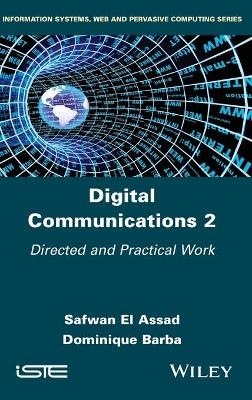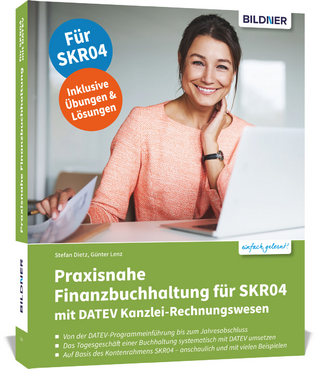
Digital Communications 2
ISTE Ltd and John Wiley & Sons Inc (Verlag)
978-1-78630-542-8 (ISBN)
El Assad Safwan, Associate Professor HDR at the University of Nantes Barba Dominique, Former Professor of the University of Nantes / Polytech Nantes
Foreword ix
Part 1. Tutorials 1
Chapter 1. Theory of Information: Problems 1 to 15 3
1.1. Problem 1 – Entropy 3
1.2. Problem 2 – K-order extension of a transmission channel 6
1.3. Problem 3 – Compressed speech digital transmission and Huffman coding 11
1.4. Problem 4 – Coding without and with information compression 13
1.5. Problem 5 – Digital transmission of a TV signal (luminance component only) with information compression and Huffman coding 17
1.6. Problem 6 – Information, entropy, codes (1) 21
1.7. Problem 7 – Information, entropy, codes (2) 27
1.8. Problem 8 – Coding and transmission of a television-type information source 34
1.9. Problem 9 – Entropy and motion information encoding of multimedia source 42
1.10. Problem 10 – Hamming coding 47
1.11. Problem 11 – Cyclic coding (1) 53
1.12. Problem 12 – Cyclic coding (2) 60
1.13. Problem 13 – Cyclic coding and Hamming coding (1) 66
1.14. Problem 14 – Cyclic coding and Hamming coding (2) 69
1.15. Problem 15 – Cyclic code, M-sequences, and Gold sequences 75
Chapter 2. Baseband Digital Transmission: Problems 16 to 26 83
2.1. Problem 16 – Entropy and information to signal source coding 83
2.2. Problem 17 – Calculation of autocorrelation function and power spectral density by probabilistic approach of RZ and NRZ binary on-line codes 89
2.3. Problem 18 – Calculation of the autocorrelation function and the power spectral density by probabilistic approach of the bipolar RZ code 108
2.4. Problem 19 – Transmission using a partial response linear coding 124
2.5. Problem 20 – Signal information coding and digital transmissions with partial response linear encoder 129
2.6. Problem 21 – Baseband digital transmission system (1) 135
2.7. Problem 22 – Baseband digital transmission (2) 144
2.8. Problem 23 – M-ary digital baseband transmission 152
2.9. Problem 24 – Baseband digital transmission of bipolar coded information 163
2.10. Problem 25 – Baseband transmission and reception using a partial response linear coding (1) 181
2.11. Problem 26 – Baseband transmission and reception using a partial response linear coding (2) 189
Chapter 3. Digital Transmissions with Carrier Modulation: Problems 27 to 33 199
3.1. Problem 27 – Digital transmissions with carrier modulation 199
3.2. Problem 28 – 4-QAM digital modulation transmission (1) 209
3.3. Problem 29 – Digital transmissions with 2-ASK modulation 219
3.4. Problem 30 – 4-QAM digital modulation transmission (2) 226
3.5. Problem 31 – Digital transmissions with 4-QAM digital modulation: case of single and double paths propagation 235
3.6. Problem 32 – Performance of digital modulations and 16-QAM digital modulation 245
3.7. Problem 33 – QAM encoding and transmission of motion information of digital video 253
Part 2. Practical Works 265
Chapter 4. Study of the Transmission of Digital Information on Two-wire Cables 267
4.1. Introduction 267
4.2. Recall of essential results on transmission line theory 268
4.3. Practical study 269
4.4. Objectives 270
4.5. Measurement of the characteristic impedance Zc by a reflectometry method (Time Domain Reflectometry: TDR) 270
4.6. Measurement of attenuation α as a function of frequency 271
4.7. Variation of the attenuation α as a function of length 271
4.8. Measurement of the bitrate D (bit/s) 272
Chapter 5. Study of Baseband Digital Transmission Systems for the Transmission of Analog Signals (Transmitter and Receiver) 273
5.1. Objectives 273
5.2. First part – Study of a pulse amplitude modulation and time division multiplex signal transmission system 274
5.2.1. Experimental study 275
5.3. Second part – Study of a pulse code modulation (PCM) signal transmission system and transmission error control (error detector code and error corrector code) 277
5.3.1. Experimental study 280
Chapter 6. Study of On-line Codes for Baseband Modulation and Carrier Modulation 283
6.1. Objectives 283
6.2. Description of the electronic boards 283
6.3. First part – Study of on-line codes for baseband digital transmission 285
6.3.1. Experimental part 285
6.4. Second part – Study of digital modulations with carrier 286
6.4.1. Amplitude shift keying modulation (ASK) 286
6.4.2. Digital frequency shift modulation (FSK) 287
6.4.3. Phase shift keying modulation (PSK) 288
Chapter 7. Study of a QPSK Modem Under MATLAB, Simulink, Communications and DSP 291
7.1. Objective 291
7.2. Required work 292
7.3. Appendix: Diagrams of the QPSK modem and its different blocks 293
Chapter 8. Study of a Coding and Decoding System by Cyclic Codes 297
8.1. Objective 297
8.2. Recall of the principles of cyclic coding and decoding 297
8.3. Coding by division: systematic code 298
8.4. Decoding by division: principle of calculating the syndrome 299
8.5. Required work 300
8.6. Appendix: Block diagrams 301
References 305
Index 307
| Erscheinungsdatum | 15.01.2021 |
|---|---|
| Verlagsort | London |
| Sprache | englisch |
| Maße | 156 x 234 mm |
| Gewicht | 642 g |
| Themenwelt | Mathematik / Informatik ► Informatik |
| Technik ► Elektrotechnik / Energietechnik | |
| Technik ► Nachrichtentechnik | |
| ISBN-10 | 1-78630-542-9 / 1786305429 |
| ISBN-13 | 978-1-78630-542-8 / 9781786305428 |
| Zustand | Neuware |
| Haben Sie eine Frage zum Produkt? |
aus dem Bereich


